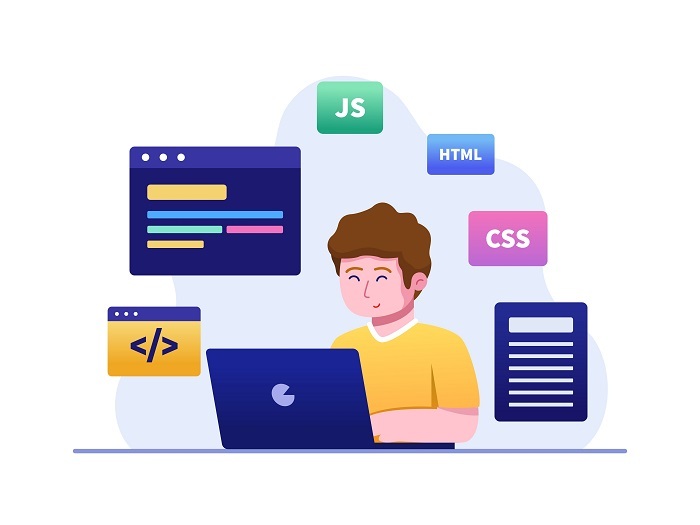
 Data Structure
Data Structure Networking
Networking RDBMS
RDBMS Operating System
Operating System Java
Java MS Excel
MS Excel iOS
iOS HTML
HTML CSS
CSS Android
Android Python
Python C Programming
C Programming C++
C++ C#
C# MongoDB
MongoDB MySQL
MySQL Javascript
Javascript PHP
PHPPhysics
Chemistry
Biology
Mathematics
English
Economics
Psychology
Social Studies
Fashion Studies
Legal Studies
- Selected Reading
- UPSC IAS Exams Notes
- Developer's Best Practices
- Questions and Answers
- Effective Resume Writing
- HR Interview Questions
- Computer Glossary
- Who is Who
Evolving Technologies Require Thorough Training Programs
Being able to work efficiently in a changing environment is a crucial managerial duty and competence. The administration of companies has been significantly impacted by the current societal shifts. Technological, social, economic, macro-political, eco-political, and expectational changes might be used to summarize these developments. The training and development of personnel utilizing modern learning technologies will be the main topic of this essay. A corporation may adapt to changing market conditions and competitive difficulties by investing in training and development. However, we immediately draw attention to the fact that information and communication technology have created new educational opportunities for both students and teachers.
A company's deliberate efforts to help employees acquire job-related skills are referred to as training. These competencies cover a range of abilities that are necessary for effective work performance. Employees should be able to adapt the information, skills, and behaviors highlighted in training programs to their daily tasks after they have mastered them. The usage of e-learning, according to many training specialists and educationalists eager to find better ways to facilitate the learning process, appears to be the solution to raising the standard of educational offerings.
How is E-Learning Related to Training?

In order to give instructional material and teaching, a type of training known as "e-learning" uses electronic technology. Online courses, virtual classrooms, webinars, and other digital tools can be included in this. E-learning offers convenience and flexibility for both individuals and companies since it enables learners to access learning resources and training materials at any time and from any location.
The adoption of e-learning signifies a significant shift in practice that has to be properly managed, especially when change management is necessary to synchronize a number of significant components at various levels. E-learning is already widely utilized in education and training, and it may be used at home, in community centers, as well as in workplaces, and in academic institutions. People are realizing that they may now enroll in classes that were previously out of their reach, which makes it simpler for them to pursue personal and professional growth.
E-learning can also incorporate interactive components to improve the learning process, such as tests, simulations, and virtual instructors.
E-capacity learning to allow for instruction to move forward at a speed that is suitable for the student is one of its other significant potential benefits. There are six stages of technology-based instruction, which is useful input from the research. Communication, online referencing, testing assessment, the provision of computer-based training and multimedia, blended learning, and electronic performance support systems are some of these
Role of Technology at Different Stages
I would like to break down the four major instructional components in this quick overview of the role of technology in development and training since these four factors have the power to make or break the training of your employees. I also want to show you how technology can maximize learning opportunities for your employees. Here are 3 stages in the training where technology plays a vital role −
Stage #1: Assessment

You need to have an idea of what someone already knows before you can say with certainty that learning has occurred. Therefore, assessing someone's knowledge and skills—or getting a baseline pulse on them—is the first step in learning how technology might be used in training and development.
In the training, assessments are often done informally and without being documented by the trainer. However, you need to use technology if you want to achieve this on a large scale inside an enterprise company and then apply those outcomes to the growth of individual personnel.
Utilizing technology, you may monitor employee knowledge both before and after the process to see how effective your training and development is. You may also examine how well-designed your training is. To make sure you haven't introduced any inherent biases, you may, for instance, keep an eye on demographic patterns. You might also discover that training has to be updated because everyone who takes it does poorly on the evaluation.
The complexity of your evaluation may increase along with the complexity of your learning and development technologies. To accurately reflect a person's objectives and chances for progress, for instance, you might broaden this foundation beyond check-the-box knowledge.
Stage #2: Reinforcement

To educate let’s say 10000 employees with high-quality training materials, but quite another to be able to provide them the opportunity to practice what they have learned. It's critical to have a scalable and affordable method for reducing distraction and enhancing the training your employees get. You may utilize technology to develop specialized assistance for a certain employee, course, or subject during the reinforcement phase. After an individual has completed training, it is simpler to incorporate their new knowledge into their daily work.
There is a lot of room for customization when it comes to reinforcement for a particular course. Weekly reminders may be sent by one course, while suggestions and advice may be provided by another course based on a student's learning profile. Another may use gamification or leaderboard learning to foster friendly rivalry among staff members who have completed the same course.
Stage #3: Feedback

Live, one-on-one feedback helps information be put into practice, but you can picture the organizational problem that would arise from giving each employee that type of in-depth evaluation in person. It would be extremely difficult, even with a learning and development team that was fully staffed.
The ability to assess and give feedback on employee performance on a scale that would otherwise be impractical is made feasible by cutting-edge technology like virtual avatar programs and video conferencing.
Conclusion
The utilization of modern technologies for training and development activities is the main topic of the study. Compared to more conventional training and development techniques, e-technology may offer advantages. The acceptance of new technology for training and development purposes is not a simple process, and some degree of opposition to its introduction in organizations should be expected. This is a fascinating finding that makes it really debatable whether the lack of adoption of new technology for this purpose is due to a lack of resources, a lack of will, or a lack of desired results.

